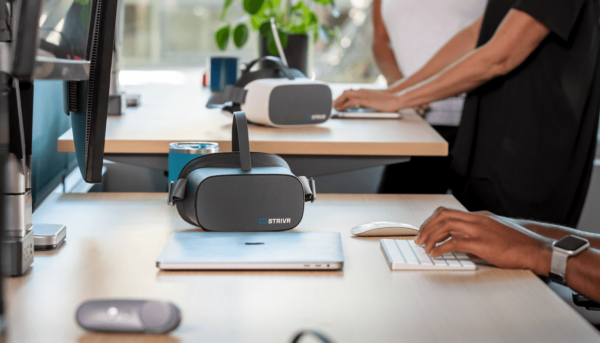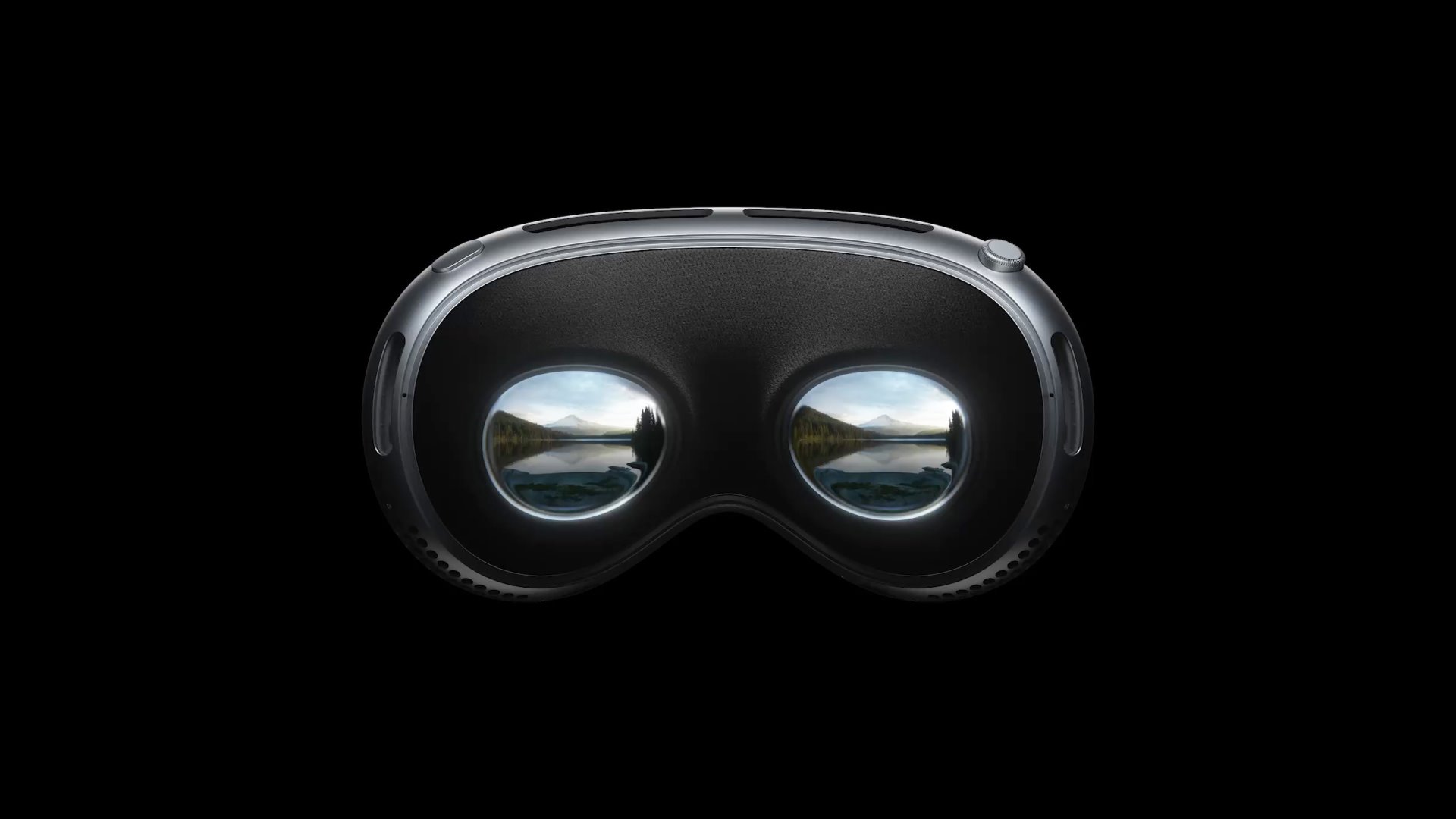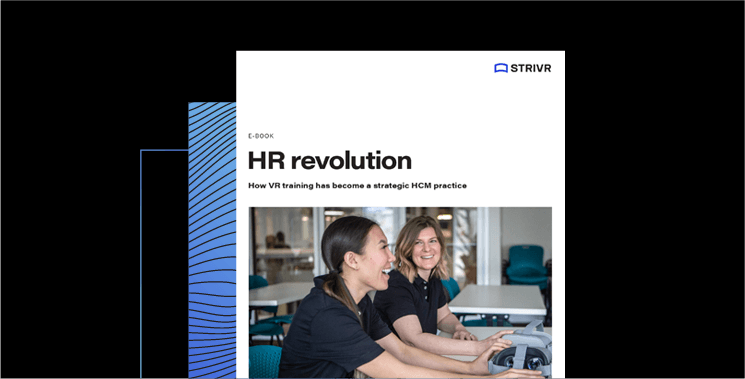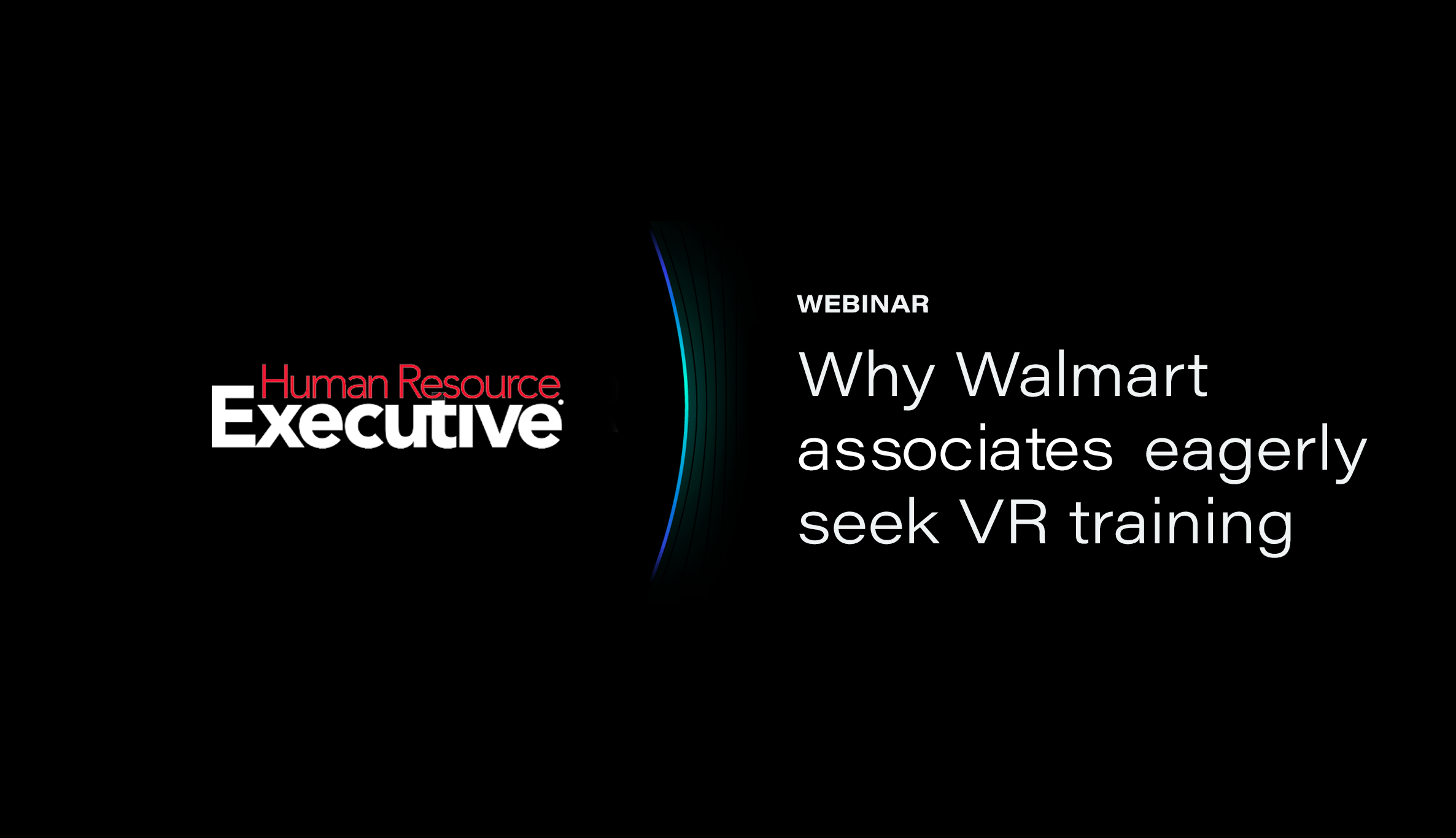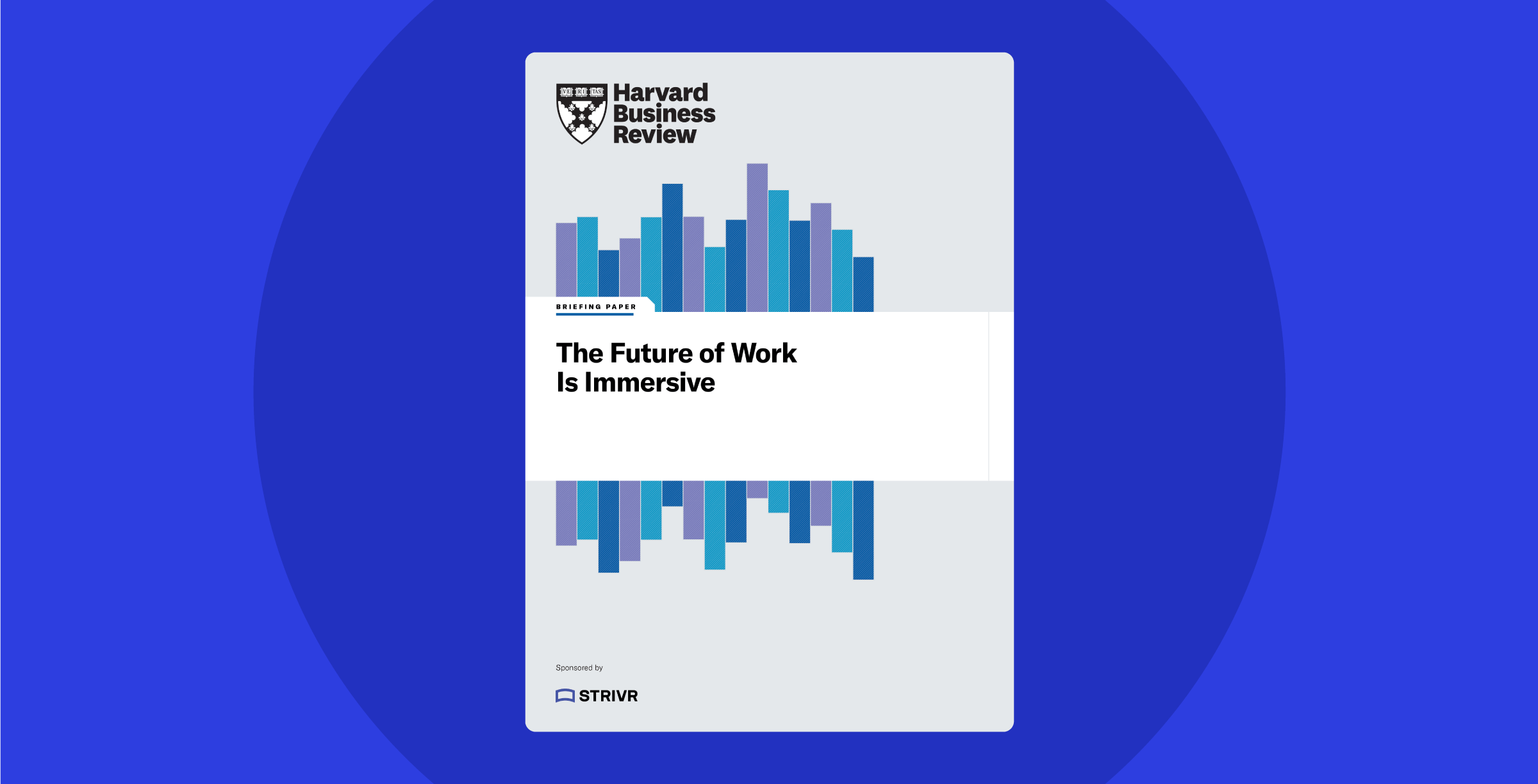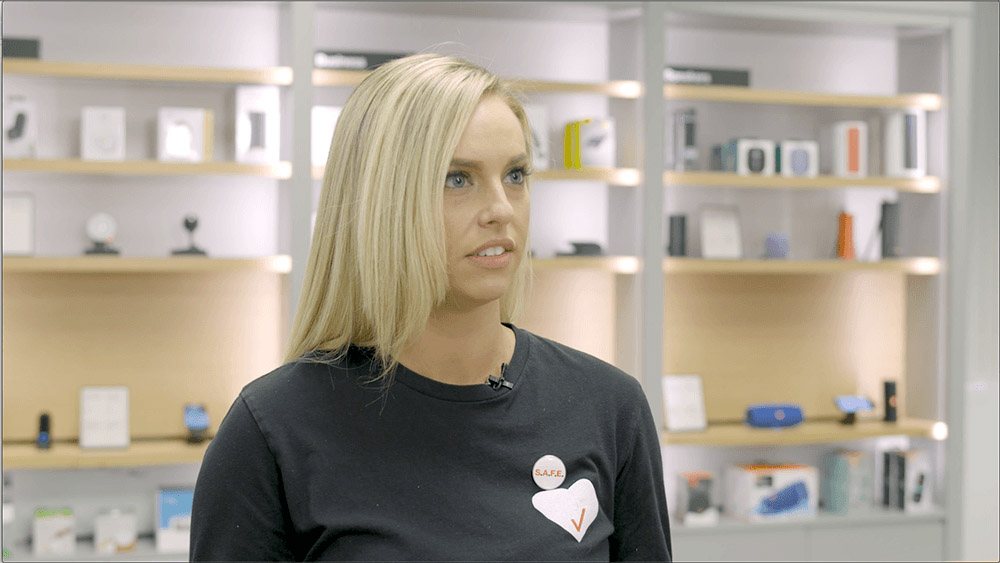It’s an exciting time to be in HR. For as much as change and uncertainty can be stressful, it also presents a unique opportunity for you to contemplate how best to position employees within their company for success. One exciting technology to position the worker to succeed is Virtual Reality (VR).
VR has taken the HR world by storm. Even with the significant changes to how our world works, VR is a cornerstone of corporate learning today and a foundation for where things are headed.
Founded in behavioral and cognitive science, Immersive Learning with VR provides a memorable tool that accelerates employees’ proficiency in their roles through an immersive training environment.
What can you do with a VR headset?
You can immerse employees into “real” work situations, capitalize on proven best practices for behavioral learning and improve learner engagement, preparedness, knowledge retention, and confidence.
Our customers’ HR organizations are finding the best way to use a VR headset has been to train for critical skills and needs pertaining to health and safety, operational efficiency, customer service, and soft skills within the business.
Here are four use cases in which your colleagues are using VR to train for these skills.
Onboarding new employees at scale
What can you do with a VR headset? You can onboard new frontline workers faster and more effectively.
The need for workers to hit the ground running on day one has never been higher. Imagine being hired in a job where you’ve never worked before. You want to feel confident in your ability to do the job, handle potentially frustrated customers, and remain safe. You’re going to lean heavily on the training you receive during onboarding.
Sprouts Farmers Market found the best way to use a VR headset was by transforming its ability to deliver memorable, safe, and game-changing onboarding at scale.
Traditionally, Sprouts trained in person, with trainers traveling around to stores to conduct cluster training sessions. The orientation covered everything from Sprout’s values to safety to customer service.
With travel restrictions due to the COVID-19 pandemic, training team members in 23 states and making sure everyone was trained in the same way was a challenge. Sprout’s leadership wanted to migrate away from cluster training and find a more effective, standardized, and scalable model.
The Sprouts team realized that VR was a game changer because regardless of their location, new team members could experience standardized Immersive Learning modules, interacting in a way that helps them absorb the learning in a self-paced way.
In fact, the Sprouts team saw an 81% reduction in training time with VR. They also found that their VR learners were 16 times more likely than non-VR learners to remember all six company values.
All of this happened during the pandemic, imagine the possibilities during normal circumstances.
Upskilling managers in giving feedback
What can you do with a VR headset? You can instill confidence in a manager’s ability to deliver feedback and have hard conversations.
The content and experiences provided in a VR headset offer a safe and informative learning space for a new manager. Traditionally, one learned the art of giving feedback through role play and in-person group trainers. The most effective trainer was trial and error, but sometimes the ramifications of that instance negatively affected the employee experience.
DDI, in partnership with Strivr, offers Immersive Learning as part of its leadership training. In one module, learners sit across from a direct-report who is struggling to work effectively with a colleague.
They are guided through the feedback session in VR, which is recording their speech, as well as head and hand movements. Then, learners have an opportunity to watch and listen to themselves for self-evaluation, an important tactic for long-term retention of the material.
Creating a more inclusive workplace
What can you do with a VR headset? You can cultivate awareness around non-inclusive behaviors and ultimately create a better workplace for all.
Diversity and inclusion are a major priority for most enterprise organizations today. Teaching inclusive behaviors and preparing teams and managers for tough conversations in the workplace is at the heart of creating diverse and inclusive companies.
Traditionally, roleplay, videos, and PowerPoint presentations illustrated non-inclusive behaviors. While these methods told the learner what those behaviors looked like, they failed to demonstrate how to effectively manage an encounter where a non-inclusive behavior occurred.
This is the power of VR: VR lets learners practice handling a situation where a non-inclusive behavior has occurred in a highly empathetic, thoughtful, and informed way.
For the most effective learning to occur, VR provides a safe and realistic environment to make mistakes and learn. VR affords a learner the chance to experience non-inclusive behaviors as the aggressor, the victim, and the bystander. By getting to see all three perspectives, learners are given an illustration of what these behaviors look and sound like so they can learn how to manage the encounter.
Safely handling dangerous situations
What can you do with a VR headset? You can safely experience a dangerous situation which improves team preparedness and confidence if the situation ever arises.
Depending on your industry, a dangerous situation might be an armed robber, loading a truck, or inspecting machinery. These precarious situations present a significant safety issue to an untrained employee.
Through VR, trainees get to safely experience situations that are normally unsafe. Most importantly, they can practice in these virtual situations as many times as needed to feel prepared and confident. Using interactive training techniques that manuals and videos can’t provide, employees can experience, make mistakes, and learn through repetition, which is often impossible in the real-world when it puts the enterprise, or employees at risk.
Verizon found that preparing employees for armed robbery and snatch-and-grab situations with VR was the most effective way to keep them safe. Since the brain treats VR situations like real life, trainees are put under intense stress while learning how to cooperate, stay safe, and provide valuable information to law enforcement during and after a robbery.
Safe practice is a unique benefit of immersive technology, and gives them the best chance at recalling their training if they ever actually face the situation. The ability to train hundreds of store employees quickly and with the greatest impact was a huge reason Verizon chose VR.
VR is here to stay, and HR orgs everywhere are adopting it
Your peers in HR organizations across industries are already harnessing the power of VR. The need to embrace VR is not a nice-to-have but a need-to-have. Sprouts, DDI, Walmart, and Verizon recognize that delivering highly engaging and effective VR learning to their large workforces is vital if they want to remain competitive.
Use cases like onboarding at scale, upskilling managers, diversity and inclusion, and safety are starting points for you to recognize the power of VR.
To learn more about how Walmart is using VR to enhance the employee experience, check out our webinar.
